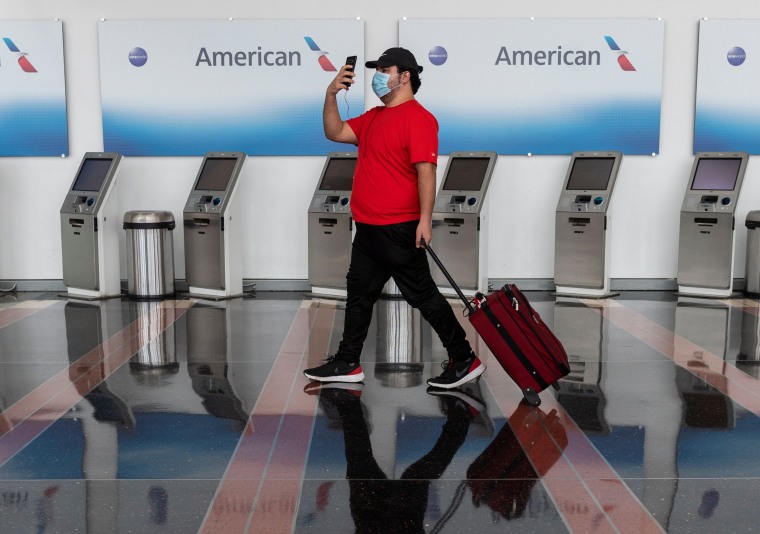Tens of thousands of airline employees are in danger of losing their jobs on October 1, one day after federal aid expires and as the coronavirus pandemic continues to batter the travel industry.
American Airlines became the latest legacy carrier on Tuesday to warn employees it could cut up to 19,000 jobs on October 1. On Monday, Delta Air Lines said it may have to furlough nearly 2,000 pilots, even after nearly as many accepted buyouts. In July, United Airlines warned employees of 36,000 potential job cuts.
Separately, low-cost Spirit Airlines pilots also reached an agreement with the airline on Tuesday to work fewer hours in order to avoid as many as 600 furloughs when federal aid runs out.
The airlines are required to notify staff about potential layoffs or furloughs 60 days in advance. United, American, Delta and other carriers that took $25 billion in federal payroll aid are also barred from reducing employees’ hours or salaries until October 1.
“They’re in a world of hurt. The industry is suffering not so much from COVID, but pandemic panic,” Mike Boyd, an aviation consultant at Boyd Group International told NBC News. “Congress has to step up, but they’re playing chicken.”
Air traffic is down 70 percent from this time last year, according to Helane Becker, an airline analyst at investment bank Cowen. While weak demand is causing airlines to strategically rethink their routes and staffing, the airlines are also trying to put pressure on Congress and President Donald Trump to throw them a lifeline and extend the payroll support program.
“If that continues to be the case, how can the airlines keep staff on board for an airline that is 2.5 times larger than it is today,” Becker told NBC News. “If they fly ‘ghost planes’ to cities where there is zero demand, they will run out of cash, and instead of, as in the case of American, 19,000 furloughs, all 107,000 employees will lose their jobs, communities will lose service and consumers will pay more for airline seats.”
The potential October 1 furloughs and layoffs could also lead to a smaller air travel system in the long term, according to other experts.
If airlines take an employee off their payroll, it’s not as simple as welcoming them back when demand improves. Everyone from pilots to flight attendants and baggage handlers will have to go through new training.
“If pilots are away for more than a period of time, pilots have to line up in front of the flight simulators and they probably don’t have enough to handle the volume,” Boyd said. Then there’s security and hazardous materials training classes, among other courses needed to work for an airline.
On a normal day last year, Becker said 2.5 million people would fly. Of those, one million were domestic leisure, 750,000 international leisure trips and 750,000 were business travelers. In August, she said about 750,000 people fly every Monday, Thursday, Friday and Sunday, with Tuesday, Wednesday and Saturday bringing in slightly less traffic at about 600,000 travelers per day.
International travel has been hit hard with most countries banning travelers from the United States, barring special exceptions. Even demand for domestic travel has diminished amid concerns about the virus and some states, such as New York, requiring travelers from dozens of other states where the virus isn’t under control to quarantine for 14 days on arrival.
Experts forecast a domestic airline industry recovery could take three to five years.
“A lot depends on treatment and vaccine and willingness of governments to allow their citizens to travel,” said Becker. “As long as this continues, it will be a very long recovery indeed.”
